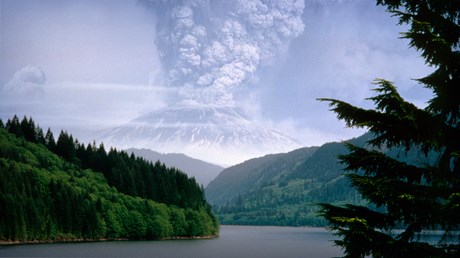When Mt. St. Helens erupted, plants returned amid ruin. This pandemic holds the same glory.

In late March 1980, while walking through the cabin of a passenger ship on the Salish Sea, I noticed a newspaper on a table and stopped in my tracks, surprised by a dramatic photograph under a headline reporting a small eruption on the summit of Mount St. Helens. I was returning from a college work week at a Young Life camp in British Columbia. The eruption on March 27 was the first indication that Mount St. Helens had awakened after its last eruption in 1857.
Later, on the top deck of the ship, I joined some other students gathered around two guitar players. They were singing “God, Make Us Your Family” by The Fisherfolk—a rousing, inspiring chorus and haunting, evocative verses about God’s restoration of the earth and the family of all mankind. I felt somber and thoughtful, standing on the upper deck in the dark as we passed under the lights of the Lion’s Gate Bridge along the downtown Vancouver waterfront.
Everyone in the Pacific Northwest knew that they lived near volcanos. Mount Hood, Mount Rainier, and Mount Baker are prominent and stunning features on the horizons of Portland, Seattle, and Vancouver. But no one (except geologists) spent any time thinking about what their presence really meant. They were supposed to be extinct, weren’t they?
Now in the global COVID-19 pandemic, a question that seemed distant and perhaps irrelevant when everything was going well for us has risen to the surface—where is God in all of this anyway?
The eruption
Everyone in the region remembers where they were when the unthinkable happened on a Sunday morning, May 18, 1980. I was in Bridle Trails State Park, a large forested park in Bellevue, Washington, again working for Young Life. I stood in the quiet ...
from Christianity Today Magazine https://ift.tt/2LEXmy8
No comments:
Post a Comment